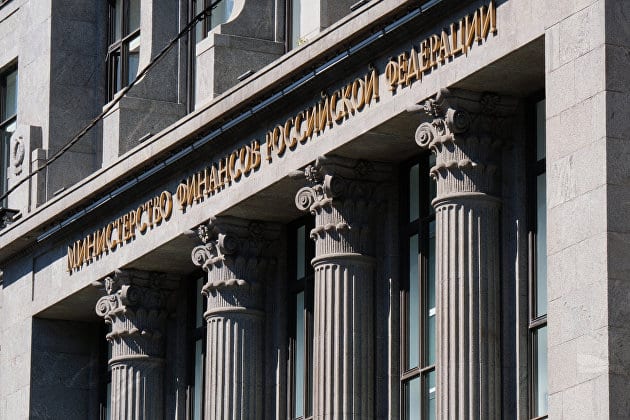

In 2022, the Ministry of Finance approved a new federal standard for accounting of intangible assets (IA). Olga Grigoryeva, the CEO of Sterngoff Audit, prepared the detailed review of changes and provided details on how the audit of intangible assets is carried out.
The Order “On Approval of the Federal Accounting Standard FAS 14/2022 “Intangible Assets” No. 86н dated 30/05/2022 was registered by the Russian Ministry of Justice on 28/06/2022 under No. 69031 and came into effect on July 9, 2022.
FAS 14/2022 “Intangible Assets” will be mandatory for application to accounting statements for 2024, but it may be used earlier, i. e. from 01/01/2023.
In addition, changes were introduced in FAS 26/2020 “Intangible Assets” pursuant to the Order of the Russian Ministry of Finance No. 87н dated May 30, 2022.
Thus, these orders set forth the requirements to inclusion in the accounting statements of information on intangible assets of organizations and capital investments in such assets.
FAS 14/2022 and FAS 26/2020 supersede the former RAS 14/2007 “Accounting of Intangible Assets” and RAS 17/02 “Accounting of Costs for Research and Development, Design and Experimental, Process Works”.
Review of new rules of IA and R&D accounting is provided in the Information Memorandum of the Russian Ministry of Finance dated 18/07/2022 No. IS-uchet-40 “Changes in Accounting Legislation: Facts and Comments”.
I would like to point out the most important changes in IA accounting introduced by FAS 14/2022:
For the purpose of unification of the procedures for accounting of non-current assets, for statutory regulation of accounting of intangible assets one adopted the structure similar to the structure of statutory regulation of accounting of the fixed assets.
For this purpose, the issues of accounting at the stage of acquisition (creation) of IA items were identified in the regulatory legal act dealing with the direct accounting of intangible assets and included in FAS 26/2020 (formerly, these issues were regulated by RAS 14/2007 and RAS 17/02). That means that matters connected with formation of IA initial value in different economic situations, the issues of its change after recognition are now governed by FAS 26/2020 “Capital Investments”.
The concepts traditionally used in practice in organization and maintenance of accounting records for IA were introduced. They include the IA book value, group of intangible assets, residual value, elements of depreciation, revalued price, revaluation. One introduced the concept of goodwill — an asset, the definition and attributes of which are provided for by the International Financial Reporting Standard (IFRS) 3 “Business Combinations”.
Attributes characterising the intangible assets were specified.
It should be noted here that an apparent innovation is that license agreements were referred to IA. Be reminded that according to the current RAS 14/2007 the costs for acquisition of rights to the intellectual property items (exclusive and non-exclusive licenses) are reflected as deferred expenses.
FAS 14/2022 specifies the procedure for recognition in organization’s accounting records of an asset, the exclusive right to which is jointly held by the organization and other persons (formerly, it was not specified under RAS 14/2007). In addition, the means of individualization (corporate names, trademarks, service marks etc.) created by own efforts of the organization were excluded from the scope of FAS 14/2022. According to RAS 14/2007 such items referred to IA. Pursuant to new rules, the costs connected with creation of such items are recognized as costs for the period, in which they are incurred.
RAS 14/2007 did not provide for the cost criterion for IA recognition. This issue could be regulated by the organization accounting policy. FAS 14/2022 sets forth the procedure for accounting of the so-called low-value IA.
These items include assets characterized by the attributes established for intangible assets but having the trifling value per unit. The standard provides for the general approach to determining the “low value” of intangible assets; the items are deemed low-value for accounting purposes based on the materiality of information about the same. Pursuant to this approach, the organization sets the value limit for a low-value asset.
Among other changes, the basic innovations with respect to depreciation of intangible assets are worth notice. FAS 14/2022 specifies the factors for determining the useful life of the intangible assets. The calculation of IA depreciation includes the estimated parameter – IA residual value.
After recognition, an IA item, for which there is an active market, may be recognized based on the revalued price. This method of evaluation is not allowed for the means of individualization, permits (licenses) for certain types of activity. For the purpose of FAS 14/2022, an active market is defined according to the International Accounting Standard (IAS) 38 “Intangible Assets” (previously, an “active market” concept was not formulated).
FAS 14/2022 provides for mandatory testing of intangible assets for impairment and accounting of changes in their book value due to impairment. Similarly to FAS 6/2020, impairment is managed in the manner prescribed by IAS 36 “Impairment of Assets”.
The audit of intangible assets is carried out every time, when the accounting statements of an organization are audited.
In addition, this may be an additional audit service provided to check the correctness of accounting and tax records in connection with application of FAS 14/2022 and to increase efficiency of managing the intellectual property items.
The purpose of IA audit is to form an opinion on reliability of accounting statements in respect of intangible assets and to establish compliance of the accounting and taxation of operations with IA applied by the organization with the current accounting standards and tax code, to identify the substantial risks and give recommendations to eliminate the same.
IA audit plan always includes all stages of accounting:
Sterngoff Audit offers the intangible assets audit service for enterprises from any sectors and foreign companies carrying out their business in Russia.
Upon completion of the audit the customer is provided with:
Conclusion based on audit results drawn up according to the current statutory requirements with consideration for the audit evidence obtained.
Your application has been successfully accepted.
We will contact you shortly.
We have sent an email to your email, please confirm your subscription by clicking on the link in the email.



